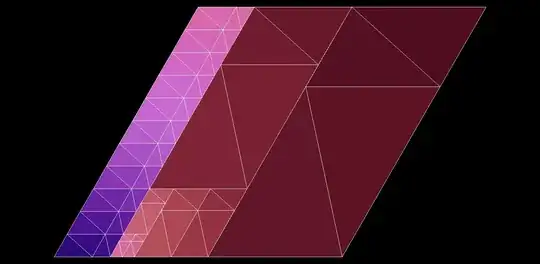While working on an answer to this excellent post by Edward H. on dissections of an equilateral triangle into similar triangles with angles of $42^\circ, 60^\circ,$ and $78^\circ$, I wondered about a related question: what if we instead try to tile a regular hexagon?
Obviously, any solution for the triangle with $k$ tiles gives a solution of size $6k$. However, we can do much better than this.
At the moment, the best solution I know of makes uses of a shape first discovered by Anders Kaseorg while working on the triangular case, namely that of a $60^\circ-120^\circ$ rhombus constructed from 72 tiles:
Putting three of these parallelograms together yields a hexagon with $\textbf{216}$ triangles.
However, I think it may well be possible to do substantially better than this. I tried a few methods and haven't yet been able to beat $216$, but just to demonstrate that arrangements of similar size can be achieved with more asymmetric configurations, here is a $274$-triangle arrangement I found:
It seems quite plausible to me that more clever arrangements of triangles could get below $216$, perhaps substantially so.
I highly recommend reading the previous question and its answers for useful background information and construction strategies before embarking on this problem.

